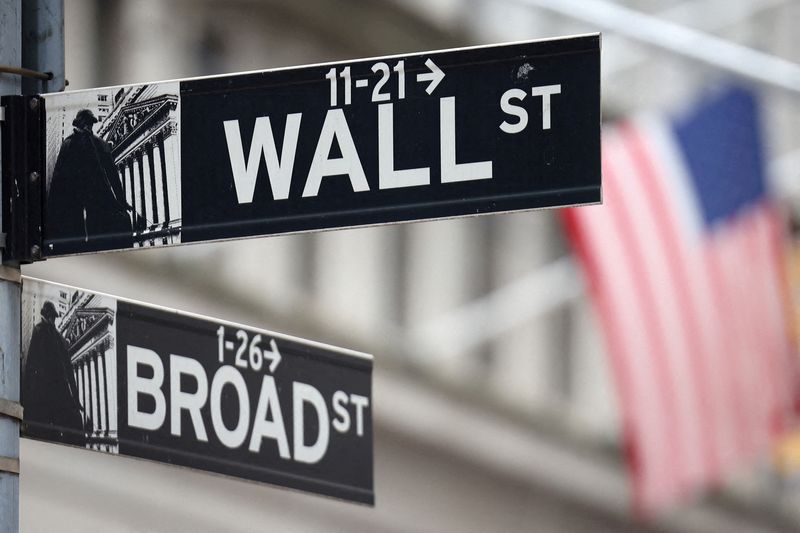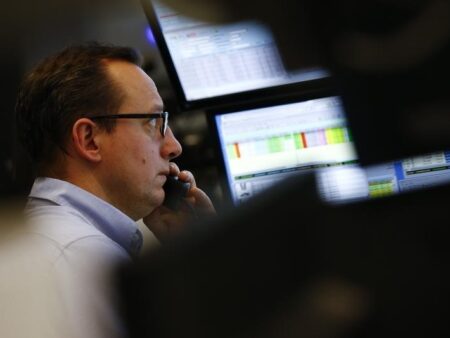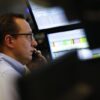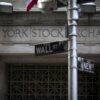(Reuters) – A look at the day ahead in U.S. and global markets from Mike Dolan
Wall Street’s has all but wiped out its post-election gains, weighed by bond markets fearful of an inflation and interest rate resurgence if the hot economy gets stoked by President-elect Donald Trump’s incoming administration.
With the fourth-quarter corporate earnings season about to unfold from Wednesday, the S&P 500 clocked another 2% loss for the week and closed on Friday less than 1% from where it ended polling day on Nov. 5.
With bond yields and the dollar still chomping at the bit first thing on Monday, S&P500 futures are down 1% ahead of the bell and the ‘fear index’ topped 22 for the first time this year – also back where it was on election day.
The latest cloud over the stormy new year market was rooted in ostensibly good news and another impressive U.S. employment report, where payrolls growth exceeded forecasts and the unemployment rate fall. That’s made it clear any lingering Federal Reserve concern about a softening labor market are wide.
If the jobs side of the equation is holding up or even tightening, then the Fed – and the Treasury bond market – now has to assess the risk of a re-acceleration of still above-target inflation.
That’s especially so as Trump plans for deportations of illegal migrants, and tax cuts and tariff rises are expected to aggravate the broader wage and price picture, while potentially adding public debt risks.
PIVOTAL MOMENT
Trump’s inauguration next week now stands as a pivotal market moment, with his Treasury Secretary pick Scott Bessent due for his Senate confirmation hearing this Thursday.
But we get a firm reality check on the inflation picture from Wednesday’s release of the December consumer price report, while Monday’s New York Fed survey of consumer inflation expectations will act as an appetizer.
With not even one full Fed rate cut left priced in futures markets for the whole year, the interest rate market is now toying with the idea that the Fed easing cycle is over after just 1 percentage point of cuts – with some now even murmuring about the chances that rates move back up from here.
The Treasury market has been running scared for over a month, with benchmark 10-year yields topping 4.8% early Monday for the first time since late 2023 – more than 40bps above the Fed policy rate.
In an extraordinary move, 10-year yields have now risen 115 basis point since the Fed began easing in September.
Two-year yields vaulted 4.4% for the first time since July.
The keeps building a head of steam as a result, hitting its highest since 2022 first thing Monday.
Agitating the price picture even further has been a rebound in oil prices that saw them touch their highest since August on Monday, and with year-on-year gains of 8% the most since July.
The latest spur came amid expectations wider U.S. sanctions will affect Russian crude supplies to the world’s top and third largest importers, China and India.
SANCTIONS
The U.S. Treasury on Friday imposed sanctions on Russian oil producers Gazprom (MCX:) Neft and Surgutneftegas, as well as 183 vessels that have shipped Russian oil, targeting the revenue Moscow has used to fund its war with Ukraine.
Analysts reckon Russian oil exports will be hurt severely by the new sanctions, pushing top buyers China and India to source more oil from the Middle East, Africa and the Americas, which will boost prices and shipping costs.
With the dollar surging across the globe and perhaps reflecting some of those crude oil curbs, India’s rupee stood out on Monday with its biggest single-day decline in two years to another record low.
Fearful of looming Trump tariffs, China and Hong Kong stocks fell again on Monday, with Hong Kong shares logging a six-day losing streak. Rising U.S. yields and the widening U.S.-China yield gap are also rankling there.
The stock losses came despite news that China’s exports gathered pace in December and imports recovered, closing out the year on a positive note.
But economists suspect the numbers were merely flattered by front-loading of exports ahead of Trump’s inauguration to sidestep expected tariff hikes and were less of a reflection of some demand recovery.
The yuan held the line, however, as China announced more tools to support its weak currency, unveiling plans to park more dollars in Hong Kong to bolster the unit and improve capital flows by allowing companies to borrow more overseas.
In Europe, rising U.S. debt yields continue to jar, too – with British gilts still at the centre of the storm there. UK 30-year government bond yields jumped to a fresh 27-year high on Monday, extending a selloff into a second week, and the pound hit its lowest versus the dollar since October 2023.
British finance minister Rachel Reeves, facing criticism for travelling to China during financial market upheaval at home, said on Saturday she would act to ensure the government’s fiscal rules are met.
Back stateside, the earnings season looms – with BlackRock (NYSE:), Citigroup (NYSE:), JPMorgan, Wells Fargo (NYSE:), Goldman Sachs, Bank of New York Mellon (NYSE:) all due out Wednesday, the same day as the CPI release.
For tech watchers, Taiwan Semiconductor Manufacturing Co (TSMC) updates on Thursday and the main global producer of advanced chips used in artificial intelligence applications is expected to report a 58% leap in fourth-quarter profit.
Key developments that should provide more direction to U.S. markets later on Monday:
* US December Federal budget, Dec employment trends report, New York Federal Reserve’s Dec survey of consumer expectations

* Defence ministers of Poland, Germany, Britain, France and Italy meet near Warsaw for talks on Ukraine
* NATO Secretary General Mark Rutte speaks at European Parliament
Source link

















